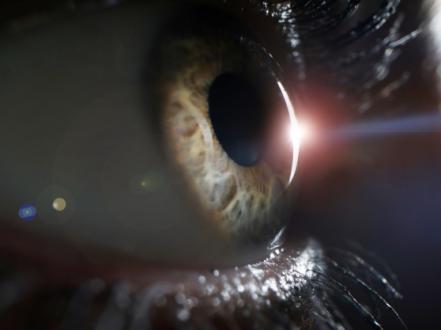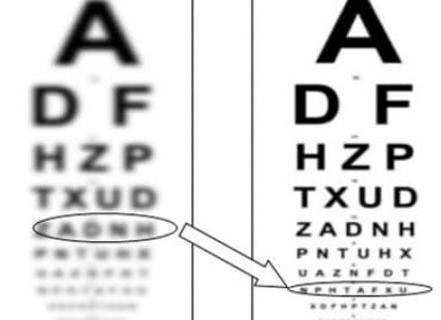Irritation of the eyes is something that almost everyone experiences at some point or another, but few diseases are quite so instantly recognizable as pink eye. Its medical term is conjunctivitis, and it is an inflammation of the thin covering over the white of the eye and the inner surface of the eyelid.
Because of its unmistakable signs and high risk of contagious transmission, pink eye causes anxiety not just for the person who has it but also for others surrounding them. So how do you get pink eye, and why does it appear to spread so readily in schools, workplaces, and domestic environments? Let's explore what makes this illness so infectious, how it develops, and the best protocols to heal and avoid it. Remember that being aware of vital details will help you to protect your eye and vision health.
How Do You Get Pink Eye?
One of the most frequently asked questions that doctors get is, How do you get pink eye? The answer depends on its underlying cause. Pink eye may be brought about by viruses, bacteria, allergies, or irritants like smoke and dust. By learning what causes pink eye, you can determine whether it is contagious or not.
The most common form is viral conjunctivitis, usually with a respiratory or cold illness. Bacterial form occurs from particular bacteria and is spread rapidly from one person to another through contact. Allergic form is caused by seasonal allergens like pollen or pet dander, but pool chlorine can also cause redness and irritation for a brief period.
Because there are so many different factors that define what causes pink eye, not every occurrence is contagious. The viral and bacterial form, however, is extremely contagious, and that's why so many outbreaks take place in group atmospheres.
What Does Pink Eye Look Like?
One of the most common questions is “What does pink eye look like?”. Its appearance is usually simple: redness of the white part of the eye, eyelid swelling, and watery or sticky discharge. Some people also notice crusting about the lashes, especially upon waking.
If you’ve wondered, what are the symptoms of pink eye? The most prominent include: redness, itching, tearing, and sensitivity to light. While allergic form typically affects both eyes, bacterial or viral infections may begin in one eye and then spread to the other.
Typical Duration and Discomfort
People often ask, How long does pink eye last? The answer varies depending on the cause and treatment. Generally:
- Pink eye from a viral infection may take from a few days to two weeks.
- Bacterial pink eye typically improves within a week if it is treated.
- Pink eye from an allergy lasts as long as the patient continues to be exposed to the allergen.
- Irritant-associated pink eye usually resolves within hours of stopping the causative agent.
And how about pain—does pink eye hurt? Although the condition tends to be more irksome than painful, there are people who experience burning, stinging, or a gritty feeling in the eye.
Is Pink Eye Contagious?
The burning question on everyone's mind is: Is pink eye contagious? The quick answer is yes, but only when caused by a virus or bacteria. These forms are readily transmitted by hand-to-eye, towel-sharing, or contaminated surfaces. Allergic and irritant forms are not infectious.
This distinction is important since it determines if you should quarantine yourself from others or simply focus on getting rid of the cause or allergen.
How to Treat Pink Eye Safely
Once the question is how one should treat pink eye, the right answer depends on etiology. Viral form usually spontaneously resolves, and supportive treatment such as artificial tears, warm compresses, and avoidance of contact lenses is optimal. Bacterial infections can be helped by antibiotic drops prescribed by a doctor in an effort to clear the infection.
Others wonder, can pink eye go away on its own? Viral and minor bacterial infections most likely do. However, if one's symptoms persist, worsen, or accompany vision alterations, one must seek the help of a professional. How to heal pink eye safely includes ignoring the temptation to self-diagnose or administer expired medication.
The best rule of thumb: if you're not sure about how to treat pink eye, see a healthcare professional. This way, you get treated for the specific kind you're experiencing. Moreover, it is a great way to prevent more dangerous disorders, such as glaucoma, or learn more about cataract types and their treatment schemes.
Daily Care and Prevention Tips
Because pink eye is so contagious, prevention is equally important as treatment. The best protection is ongoing hand washing. For contact lens users, cleanliness is essential too.
Allergenic patients need to decrease exposure to the offending agents through the use of air cleaners, keeping windows closed during pollen peaks, and using prescribed antihistamine drops. Eyeglasses in environments where there is dust, chemicals, or smoke will help avoid flare-ups of irritant conjunctivitis.
Ultimately, understanding “how do you get pink eye” allows you to make minor but valuable daily changes that decrease your risk.
Conclusion
Pink eye is common, but knowing its causes and modes of transmission renders it much less terrifying. Knowing details about pink eye prepares you to know if it's contagious, recognize what are the symptoms of pink eye, and know if professional treatment is required. While some resolve on their own, knowing how to cure pink eye properly and safely avoids complications. With proper hygiene, trigger awareness, and responsible management, you can keep this annoying condition under control while safeguarding others.






